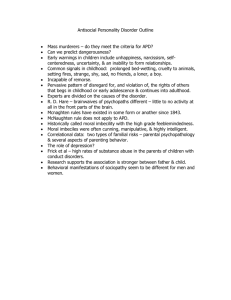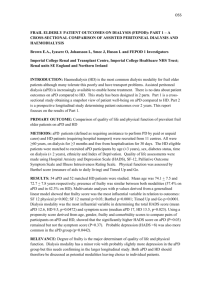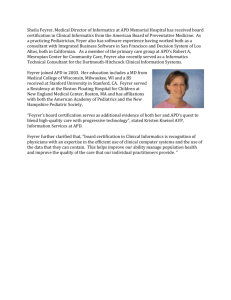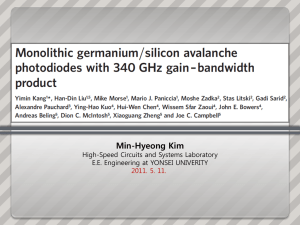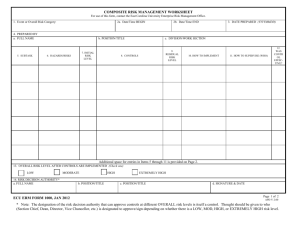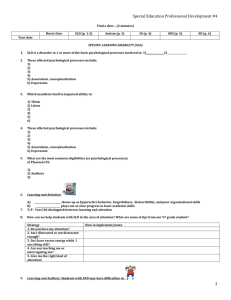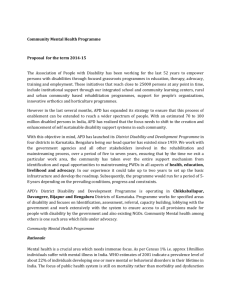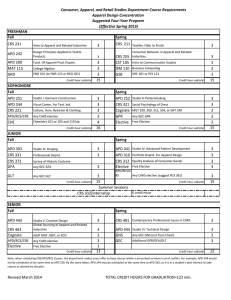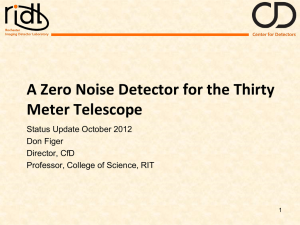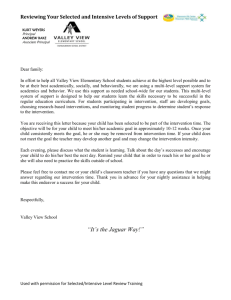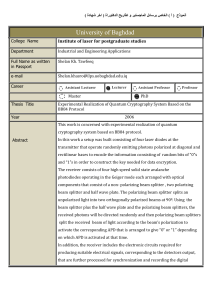from theory to bedside - British Renal Society
advertisement
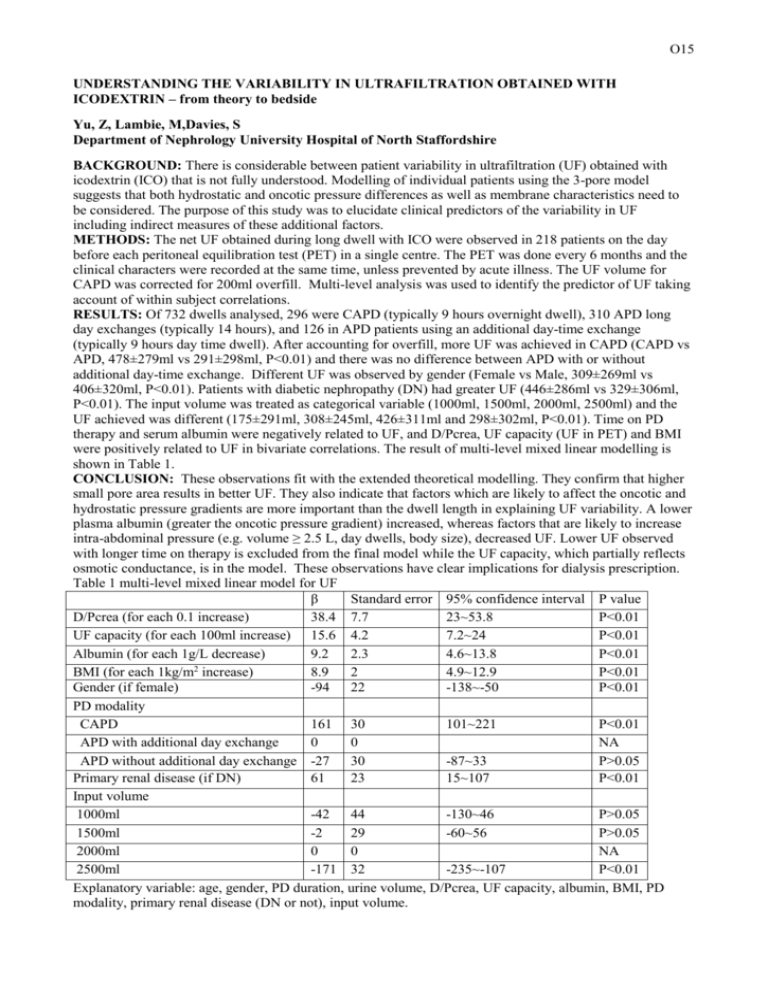
O15 UNDERSTANDING THE VARIABILITY IN ULTRAFILTRATION OBTAINED WITH ICODEXTRIN – from theory to bedside Yu, Z, Lambie, M,Davies, S Department of Nephrology University Hospital of North Staffordshire BACKGROUND: There is considerable between patient variability in ultrafiltration (UF) obtained with icodextrin (ICO) that is not fully understood. Modelling of individual patients using the 3-pore model suggests that both hydrostatic and oncotic pressure differences as well as membrane characteristics need to be considered. The purpose of this study was to elucidate clinical predictors of the variability in UF including indirect measures of these additional factors. METHODS: The net UF obtained during long dwell with ICO were observed in 218 patients on the day before each peritoneal equilibration test (PET) in a single centre. The PET was done every 6 months and the clinical characters were recorded at the same time, unless prevented by acute illness. The UF volume for CAPD was corrected for 200ml overfill. Multi-level analysis was used to identify the predictor of UF taking account of within subject correlations. RESULTS: Of 732 dwells analysed, 296 were CAPD (typically 9 hours overnight dwell), 310 APD long day exchanges (typically 14 hours), and 126 in APD patients using an additional day-time exchange (typically 9 hours day time dwell). After accounting for overfill, more UF was achieved in CAPD (CAPD vs APD, 478±279ml vs 291±298ml, P<0.01) and there was no difference between APD with or without additional day-time exchange. Different UF was observed by gender (Female vs Male, 309±269ml vs 406±320ml, P<0.01). Patients with diabetic nephropathy (DN) had greater UF (446±286ml vs 329±306ml, P<0.01). The input volume was treated as categorical variable (1000ml, 1500ml, 2000ml, 2500ml) and the UF achieved was different (175±291ml, 308±245ml, 426±311ml and 298±302ml, P<0.01). Time on PD therapy and serum albumin were negatively related to UF, and D/Pcrea, UF capacity (UF in PET) and BMI were positively related to UF in bivariate correlations. The result of multi-level mixed linear modelling is shown in Table 1. CONCLUSION: These observations fit with the extended theoretical modelling. They confirm that higher small pore area results in better UF. They also indicate that factors which are likely to affect the oncotic and hydrostatic pressure gradients are more important than the dwell length in explaining UF variability. A lower plasma albumin (greater the oncotic pressure gradient) increased, whereas factors that are likely to increase intra-abdominal pressure (e.g. volume ≥ 2.5 L, day dwells, body size), decreased UF. Lower UF observed with longer time on therapy is excluded from the final model while the UF capacity, which partially reflects osmotic conductance, is in the model. These observations have clear implications for dialysis prescription. Table 1 multi-level mixed linear model for UF β Standard error 95% confidence interval P value D/Pcrea (for each 0.1 increase) 38.4 7.7 23~53.8 P<0.01 UF capacity (for each 100ml increase) 15.6 4.2 7.2~24 P<0.01 Albumin (for each 1g/L decrease) 9.2 2.3 4.6~13.8 P<0.01 2 BMI (for each 1kg/m increase) 8.9 2 4.9~12.9 P<0.01 Gender (if female) -94 22 -138~-50 P<0.01 PD modality CAPD 161 30 101~221 P<0.01 APD with additional day exchange 0 0 NA APD without additional day exchange -27 30 -87~33 P>0.05 Primary renal disease (if DN) 61 23 15~107 P<0.01 Input volume 1000ml -42 44 -130~46 P>0.05 1500ml -2 29 -60~56 P>0.05 2000ml 0 0 NA 2500ml -171 32 -235~-107 P<0.01 Explanatory variable: age, gender, PD duration, urine volume, D/Pcrea, UF capacity, albumin, BMI, PD modality, primary renal disease (DN or not), input volume.
